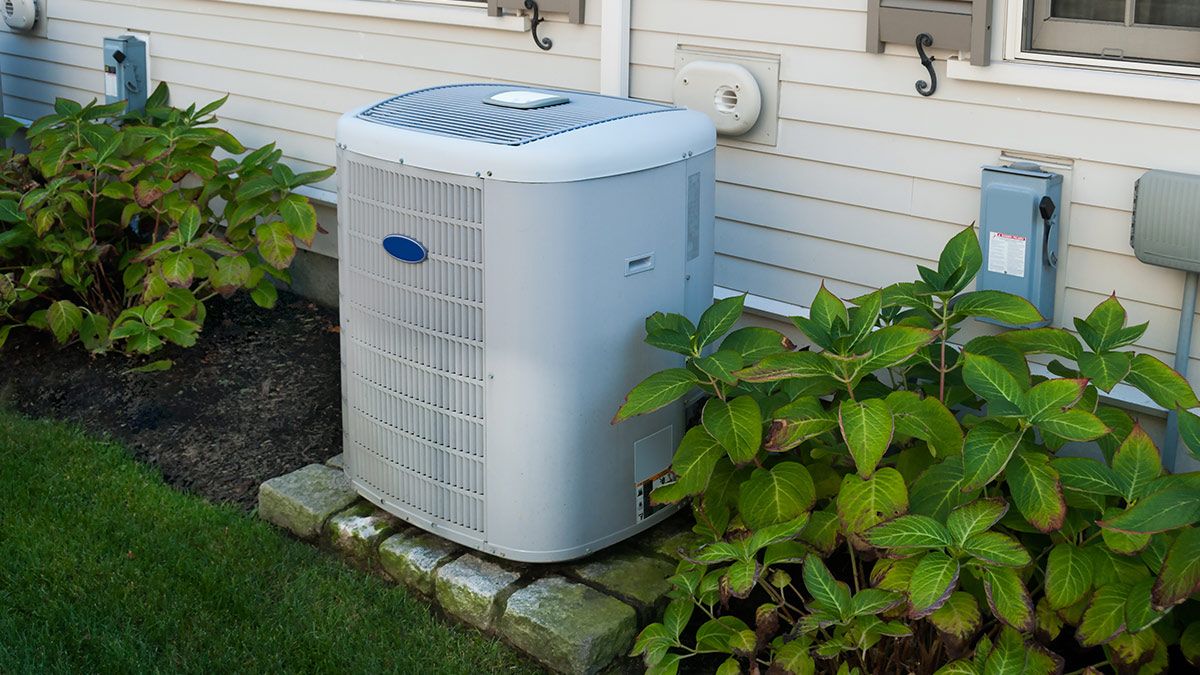Key Takeaways
- Air conditioning consumes 20% of building energy.
- Traditional systems are energy-intensive.
- Nostromo’s IceBrick system could decrease energy usage by 34%.
Each year, we experience hotter and hotter temperatures, and air conditioning units have to consume more energy to keep us cool. Luckily, this new technology might help us balance these energy demands. As the world gets warmer, we’ll need all the help we can get.
Air Conditioning Consumes a Lot of Power
Imagine a hot summer’s day when even open windows feel stifling because the combination of the heat and humidity is almost unbearable. Luckily, you have an air conditioning unit, and days like these make it a worthwhile investment. Switching on this unit feels bad, but it’s what you need to do to survive. Sadly, days like these are no longer exceptions but are becoming the rule.
Approximately 20% of the energy we use in buildings today goes towards air conditioning units and electric fans. This seriously impacts the energy grid, and in extreme cases, it could lead to rolling blackouts just to ensure that people are getting some power. A good reason to use something like Alexa’s power consumption dashboard if there ever was one.
It’s no surprise that the reason power consumption for these devices is increasing is due to the slowly but steadily increasing temperatures around the world. As recently as July 22nd this year (to date), NASA recorded the hottest day ever. Measuring your energy use might help, but this problem is bigger than any individual one of us. As we use more energy, we worsen the warming problem, but there might be a way to deal with this runaway energy consumption.
Air Conditioning Units are Built for Cooling
Air conditioners remove heat from indoors via a series of steps, with the refrigerant cycle at the core of how they work. The refrigerant alternates between a liquid and gas state as it cycles through the system to transfer heat. When it passes through the evaporator coil inside the room, the refrigerant absorbs heat from the indoor air as it changes from a liquid to a gas, effectively cooling the space.
The now gaseous refrigerant is then sent to the compressor, which increases its pressure and temperature. This high-pressure, hot gas moves to the condenser, usually located outside, where it releases the absorbed heat into the outdoor air and condenses back into a liquid. The refrigerant then passes through an expansion valve that lowers its pressure and temperature, turning it into a cool liquid and allowing the cycle to start over again.
A less-typical method of cooling is adsorption air conditioning units. These operate on a different cycle that uses a solid material to adsorb water vapor. The cycle is a bit different to traditional air conditioning:
- Adsorption: Water evaporates in the evaporator, creating a cooling effect. The vapor is adsorbed by the adsorbent material (like silica gel or zeolite).
- Preheating: The adsorbent bed is heated, preparing for desorption.
- Desorption: Further heating causes the adsorbent to release the water vapor, which then condenses in the condenser.
- Precooling: The adsorbent bed is cooled, preparing for the next adsorption phase.
These systems can be more reliable than traditional air-conditioning systems because of the lack of moving parts. They are also more energy efficient than regular air conditioning systems, despite being more expensive to install. The adsorption units are also way too big to be used for home cooling. Yet, there might be a way to make home cooling systems more energy efficient, and it starts with the humble ice cube.
What Do Ice Cubes Have to Do With Air Conditioning?
On a warm summer’s day, putting a cube of ice in your mouth is a refreshing feeling. However, that ice is also a useful cooling device if used correctly. Tech innovators Nostromo Energy has devised a method of harnessing the power of ice, and it starts with a test done in a hotel—arguably a massive consumer of energy for cooling.
The company outfitted the Beverly Hilton Hotel with a system that uses massive industrial-sized ice blocks as a source of cooling. Dubbed the IceBrick system, it comprises 40,000 capsules of water-and-glycol ice cubes, which works out to around 150,000 pounds of ice.
The IceBrick system is supposed to help building owners manage the cost of operating their premises during peak hours. Based on this concept, the system would freeze the blocks of ice during non-peak hours so that the building can access the stored energy for cooling when the demand rises.
Many buildings already have chiller tanks installed in their air conditioning systems. However, Nostromo’s technology uses both freezing and cooling power, as opposed to just having a chilled tank of water for heat dissipation. It’s been proven that trapping energy in ice could benefit many places and people. Ice storage can reduce the demand for energy by up to 34% in some areas.
This technology, called Cold Thermal Energy Storage (CTES), will likely be the next frontier in air conditioning efficiency. The difference between CTES and traditional systems is that it doesn’t try to reduce cooling energy costs but instead looks at cooling demand times. The efficiency comes primarily from scheduling the cooling to happen when the building needs it the most.
The Pros and Cons of This System
Nostromo’s IceBrick technology is innovative and could significantly change energy consumption levels in some cases. Its biggest plus is that it doesn’t require people to adapt their habits. The system works independently of user input, aside from installing the IceBrick system in the first place.
Installing this in something like a window system might be more trouble than it’s worth, meaning that Nostromo’s system might be better suited to larger centrally-cooled buildings. However, alongside Nostromo’s IceBrick system, a few other companies are also working on other fluids with better heat storage capabilities that are more portable than massive ice block systems.
Just The Tip of the Iceberg
While the IceBrick technology is a sound proof-of-concept for CTES, companies are making headway in several other avenues. From solar-sourced heat on molten salt to super-heated particles, thermal energy storage might be the way to achieve better energy efficiency.
Energy storage devices like graphene batteries could contribute to reducing the need for environmentally damaging energy production. It’s no surprise, either. It’s far more efficient to heat and cool buildings using thermal storage technology than depending on energy production to meet the building’s needs. With summers getting hotter, we’d better hope this solution becomes easy to implement sooner rather than later.







